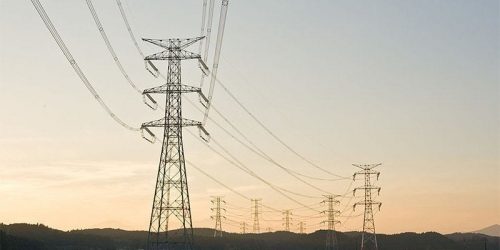NEPRA has recently issued its determination on the applicability of Open Access (OA) charges applicable on OA consumers and has rejected the petition of CPPAG in this respect connected with the wheeling charges. Buyers or consumers’ choice and competitions are the basic tenets of capitalist markets. Under Open Access, the consumer has a choice of procuring or generating his own electricity. Open Access is one of the key instruments for fostering competition, promoting new investments and power supplies, improving capacity utilization, reducing cost and prices for large customers, industries in particular. It is achieved through consumer choice as to the source of electricity; the consumer can use his own electricity generated at one location and get its surplus transmitted to another location to be used in his own enterprise or elsewhere. However, this is what one may call classical open access. In competitive markets of the industrial countries, the whole power and gas sector is under open access even for small residential consumers. In regulated markets of the developing countries, it is available under certain regulated terms and conditions. It is these terms and conditions (monetary) of open access that are under contention which we will focus on in the following paragraphs:
However, DISCOs argue, in technical regulatory jargon, that the buyer pays what they call; 1) Cross-subsidy; 2) Stranded costs; 3) other incidentals such as emergency power. As one would readily understand that there are cross-subsidies in electricity tariff; small residential consumers may pay as low as Rs.5.00 per unit and large residential ones may be paying in excess of Rs.22.
In terms of Stranded Costs, DISCOs argue that they have made infrastructural investments which would remain under-utilized if Open Access gets on its way and a significant number of large good paying and low-loss consumers shift to this system. This appears to be a genuine argument as well. One may like to support such initiatives as Open Access but the issue is who pays the burden of this incentive. If DISCOs are not paid for these heads, this would be passed on to other customers; may be poor man’s tariff increases; may be subsidies and circular debt increase. CPPAG estimates that a reduction of 1% sales from their system would have an impact/loss of Rs.14 billion to the system.
NEPRA maintains that a wheeling charge as high as Rs.8.00 per kWh is too high, but does not tell us what ought to be the correct figure. Instead, it rejects the issue of two main components of wheeling charges altogether without being able to make a convincing case. In India, corresponding wheeling charges range between IRs 2.0(Pk.Rs 4.00) to IRs 5.00 (Pk.Rs. 10.00). Another recent regulatory determination on wheeling charges for Maharashtra DISCOM (MSEDCL) allows IRs 1.31 for stranded cost and IRs 1.71 for cross–subsidy charge for HT industry, totaling wheeling charges of IRs.3.02 (Pk.Rs.6.04). Keeping in view a traditional higher cost differential in Pakistan vis-à-vis India, a Pakistan Wheeling charge figure of Pk.Rs. 8.00 does not appear to be outlandish to be rejected outright. Nepra determination has not brought about any solid argument to reject cross-subsidy claims except that it would not be feasible for Open Access, neither have the consequences or impact been considered.
In other jurisdictions .e.g. India, these claims (cross subsidy and stranded cost) have been provided in the Open Access regulations.
Actually, unless there is sunk cost and Open Access consumer benefits from marginal cost, there appears to be little rationale for any economic advantage. Captive power plants are smaller and less efficient. They cannot compete with the efficiency of large coal (42% efficiency) or gas plants (60 % efficiency).Competitive markets and tariff depends on scale economies and not some niche situations.
Perhaps, India is not a good example of success of Open Access. On the other hand, there aren’t many examples available in this case. India is playing with the idea since 2003-2008. The share of Open Access in India remains very small in all this long period. There are other non-monetary operational issues there which may have marred success of the scheme. Open Access has resulted in frequent switching between regular and Open Access tariff causing operational difficulties for DISCOs in planning and scheduling operations. Longer term wheeling agreements haven’t been in majority. The same may happen here.
Competition requires a level playing field. Exploiting market inadequacies is no competition. With a difference of Rs. 6.00 per units, a class of inefficient producers or free-rider rentiers may be brought into the market and a class of privileged industrial users would unbalance the product markets. Such incentive schemes have not worked in the past, e.g., Gadoon Amazai in Benazir Bhutto’s government. Unless and until, an alternative system of subsidies replaces the current cross subsidies system, loading one party with cross-subsidy and relieving the other of it, would not promote efficiency any genuine competition.
We are suffering from power surplus with circular debt poised to increase from Rs.2.3 trillion to Rs. 3.3 trillion in a matter of a few years. Classical Open Access appears to be a matter of the past when there were power shortages when even bad economics of Open Access was good enough. However, Open Access would be required for a competitive power market. That would require Discos to do away with electricity sales business, when there would be no issue of either cross-subsidy or stranded costs associated with DISCOs. Such a promised land has yet to be there. Until a power market comes into effect, the discussion on the subject is rather premature. Or a moderate and compromise solution may have to be worked out that may not cause unaffordable consequences. Perhaps a case can be made for not considering stranded cost (or dealing with it in a different way, e.g. on actual basis) which may not be substantial initially or may not be there in initial stages. Can a case be made for special industrial zones or private sector hydro in KPK? One may think about it.





